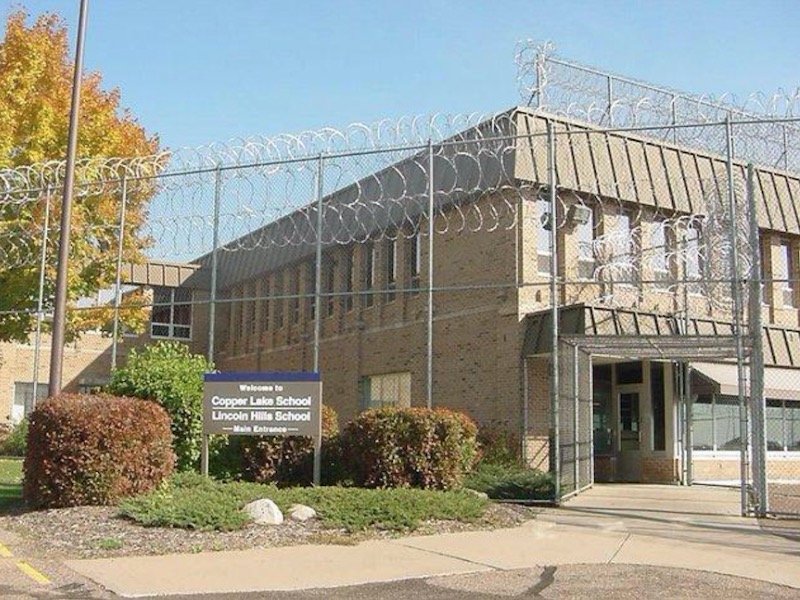You may have heard that Lincoln Hills is closing, but what does that mean for Milwaukee youth and for our neighborhoods? Let’s break it down. Everything you need to know, all in one place.
What are Lincoln Hills and Copper Lake, and why are they closing?
Lincoln Hills School for Boys and Copper Lake School for Girls are Wisconsin’s two youth prisons. They are located in Irma, about three and a half hours from Milwaukee. Over the past several years, the youth prisons have undergone criminal investigations and been subject to numerous lawsuits for allegations of abuse, neglect and excessive use of force. A recently published report found continued use of pepper spray and isolation tactics against youth in the prisons.
The report – which also pointed to delayed staff responses when youth sought assistance and noted that rooms are not suicide-resistant – was conducted by a court-ordered monitor as part of the $18.9 million settlement between the Wisconsin Department of Corrections and the ACLU, which is representing a youth who attempted suicide while at Copper Lake.
The youth prisons are closing because the Wisconsin state legislature unanimously passed a bill called Act 185.
Who has expressed concern or resistance to the proposed facilities?
More than 150 residents of the Havenwoods neighborhood, where both the state and county facility are being proposed, showed up to a meeting last week hosted by Ald. Chantia Lewis to express concern about the facilities being built in their neighborhood. Residents requested an economic impact analysis, suggesting that the facilities could hurt local small businesses, namely Milwaukee Asian Market, 6300 N. 76th St., and asked officials to consider building the facilities in a less residential area.
Youth Justice Milwaukee, an advocacy organization representing youth, families and community members most directly impacted by the youth justice system, has consistently raised concerns about state and county officials building too many facilities with too many beds. Advocates said that too many beds could prompt the courts to place more youth in corrections, even if they don’t need to be there. The group is pushing for an increase in community-based alternatives to youth incarceration in Milwaukee, such as mentoring and job training programs.
How can community members engage in this process? What is still unknown?
Much is still unknown and undetermined about the future of youth justice in Milwaukee and Wisconsin.
Youth Justice Milwaukee is hosting a coalition meeting on Feb. 27 from 5:30 p.m. to 7:30 p.m. at the Wisconsin Black Historical Society Museum, 2620 W. Center St., where a representative from Columbia University’s Justice Lab will present on the ways that New York’s youth justice reforms could apply to Milwaukee.
What is Act 185, and what does it do?
Act 185 will close Lincoln Hills and Copper Lake by January 2021.
It mandates that the youth prisons be replaced with state-run facilities for those deemed serious juvenile offenders and smaller, regional county-run centers for youth with less serious offenses. It will also expand Mendota Juvenile Treatment Center, run by the state Department of Health Services, and turn the existing youth prisons into adult correctional facilities.
Act 185 splits the responsibility of who will run correctional centers for youth throughout the state in a new way. Both the state and individual counties will run facilities, and the two types of facilities will serve different purposes. Now, correctional placements are run only by the state Department of Corrections. Both kinds of facilities will be locked and secure placements.
The two new kinds of facilities are:
A state-run facility for youth who are part of the Serious Juvenile Offenders, or SJO, program called a "Type 1" facility because of its security level.
- This will be for youth under the age of 17 who are convicted of Class A or B felonies, or who are convicted of adult charges. Examples of offenses that could qualify a young person to be part of the SJO program are homicide, sexual assault, armed robbery or carjacking.
- Act 185 allocates $25 million of state funding for new Type 1 facilities.
- There is potential for the state to build more than one of these facilities.
County-run Secure Residential Care Centers for Youth, also known as SRCCY
- These centers are a new concept for Wisconsin. The state does not currently have any facilities that fit into this category of being secure, locked centers for youth with less serious offenses.
- The SRCCYs will be for youth under the age of 17 who are convicted of lower classifications of felonies such as battery or theft, and youth who have been convicted of non-felony offenses, such as petty theft, disorderly conduct or drug possession, but are still deemed to require secure placement.
- Counties have to apply for a grant from the state to open an SRCCY in their county to get a cut of the $40 million set aside for these centers.
- Counties can receive 95 percent of requested funding from the state if the proposed center is only for boys, or 100 percent of requested funding if center will also house girls.
- Counties can get bonus funding if they co-open a facility with another county.
- Though the centers will be run by the counties, the state Department of Corrections still has official oversight and set rules and regulations for the facilities’ construction and operation.
Additionally, Mendota Juvenile Treatment Center, located within the Mendota Institute for Mental Health, received $15 million to add at least 29 beds. This will double the size of the existing secure treatment facility, which now only serves boys.
Anything else important to know about Act 185?
Timeline
You may have heard talk about extending the timeline of the bill, and if Lincoln Hills and Copper Lake will actually close by January 2021. As is, counties that intend to open an SRCCY have to submit a grant application to the state by March 31. The Juvenile Corrections Grant Committee, which has not been assembled, will then submit approved grants to the state Joint Committee on Finance by July 19, and all youth will transfer from Lincoln Hills and Copper Lake to the new facilities by Jan. 1, 2021. Any change to this current timeline or the funding structure would have to pass through the state legislature.
But
Gov. Tony Evers has publicly expressed concern with the current timeline, indicating that the state may need more time and money to successfully replace the youth prisons. He has mentioned a possible extension of anywhere between six months to two years.
Rep. Evan Goyke (D-Milwaukee) and Rep. Michael Schraa (R-Oshkosh) are working on a follow-up bill to Act 185. According to Goyke, this bill seeks to clarify some of the terms laid out in the original bill and make it easier to implement what the bill requires. He said there are no funding adjustments or "substantive changes," but that it may include some kind of contingency plans if counties or the state struggle to meet the set timeline.
Milwaukee County officials have said that they are prepared to adhere to the current timeline and intend to close Lincoln Hills and Copper Lake as soon as possible.
Study committee
Last, as part of Act 185, the Department of Corrections gathered a 25-member Juvenile Corrections Study Committee to make recommendations about rules for the county-run facilities, programming and potential locations for the state-run facilities. Seven members were from Milwaukee, including Goyke, Sen. Lena Taylor (D-Milwaukee), Fred Royal, president of the Milwaukee NAACP, Mark Mertens, administrator of Milwaukee County Division of Youth and Family Services and Joe Donald, presiding judge of Milwaukee County Children’s Court. The committee stopped meeting in October 2018.
Where will these new facilities be, and how many will be in Milwaukee?
State facilities
The locations of the state-run facilities for Serious Juvenile Offenders have not been officially announced, but the study committee’s top choice is the Department of Motor Vehicles site, 7301 W. Mill Road.
County facility
Milwaukee County Division of Youth and Family Services announced that it will build its new facility at either 6101 W. Mill Road or 6600 N. Teutonia Ave.
According to county officials, criteria for selecting a location included the following considerations:
- 5-plus acres
- Access to public transit
- Environmentally sound
- Proximity to complementing community resources
- Underutilized/surplus Milwaukee County land
This means that there could potentially be a state-run facility and a county-run youth correctional facility within a few miles of each other on Milwaukee’s northwest side.
How many youths in these prisons are from Milwaukee, and how prevalent is youth crime in Milwaukee?
The numbers you need to know
More than 60 percent of the youth placed at Lincoln Hills or Copper Lake are from Milwaukee County, and most come from the city’s northwest side. According to the most recent available data, 80 youth from Milwaukee are currently at Lincoln Hills or Copper Lake. If the law were to change tomorrow, 24 of those youth would go to the state facility, and 56 would go to the county facility.
According to Department of Juvenile Corrections data, black youth made up more than 70 percent of youth committed to Wisconsin correctional facilities, while they are only 10 percent of Wisconsin’s total youth population.
County officials estimate it costs $140,000 per year to incarcerate a young person, and according to the Department of Juvenile Corrections, more than half of youth who were released from a correctional facility in Wisconsin committed a new criminal offense within three years of release.
In recent years, youth crime, as well as the number of youths placed in correctional settings, has decreased, which follows a national trend. According to data from Milwaukee County, the number of Milwaukee youth placed in state correctional facilities has decreased by 56.5 percent since 2011, and since 2011, law enforcement has referred 19.7 percent fewer youth to the Milwaukee County Department of Youth and Family Services.
What do we know about the proposed county facility?
In addition to the final potential locations, Milwaukee County has revealed several key details about its proposed youth correctional facility, including predictions for its size, staffing and programming. County officials have been adamant in saying that the facility will be in stark contrast to Lincoln Hills and Copper Lake, and that it will focus on reducing youth recidivism and preparing youth to successfully reenter their communities.
"We are not bringing Lincoln Hills to Milwaukee," said David Muhammad, deputy director of the Milwaukee County Department of Health and Human Services. "We are doing something completely different."
The facility will house both boys and girls. County officials have said that they are still working to finalize the number of beds, but right now they are estimating about 40.
Mary Jo Meyers, director of Department of Health and Human Services, said the facility will operate with a ratio of at least one staff member for every five young people. Officials said they intend to hire staff in youth development positions, not as correctional officers, and that they are looking for staff who have shared experiences with the young people.
According to Mertens, the county facility will not use any restraints or isolation tactics such as pepper spray or solitary confinement to control young people.
Muhammad said the facility will be "dignifying" to youth, and that aesthetically, it will not resemble a prison.
Officials have additionally mentioned wanting to include programs that will support young people’s healing and prepare them for the workforce. The educational program for the facility has not been decided.





.jpeg)

